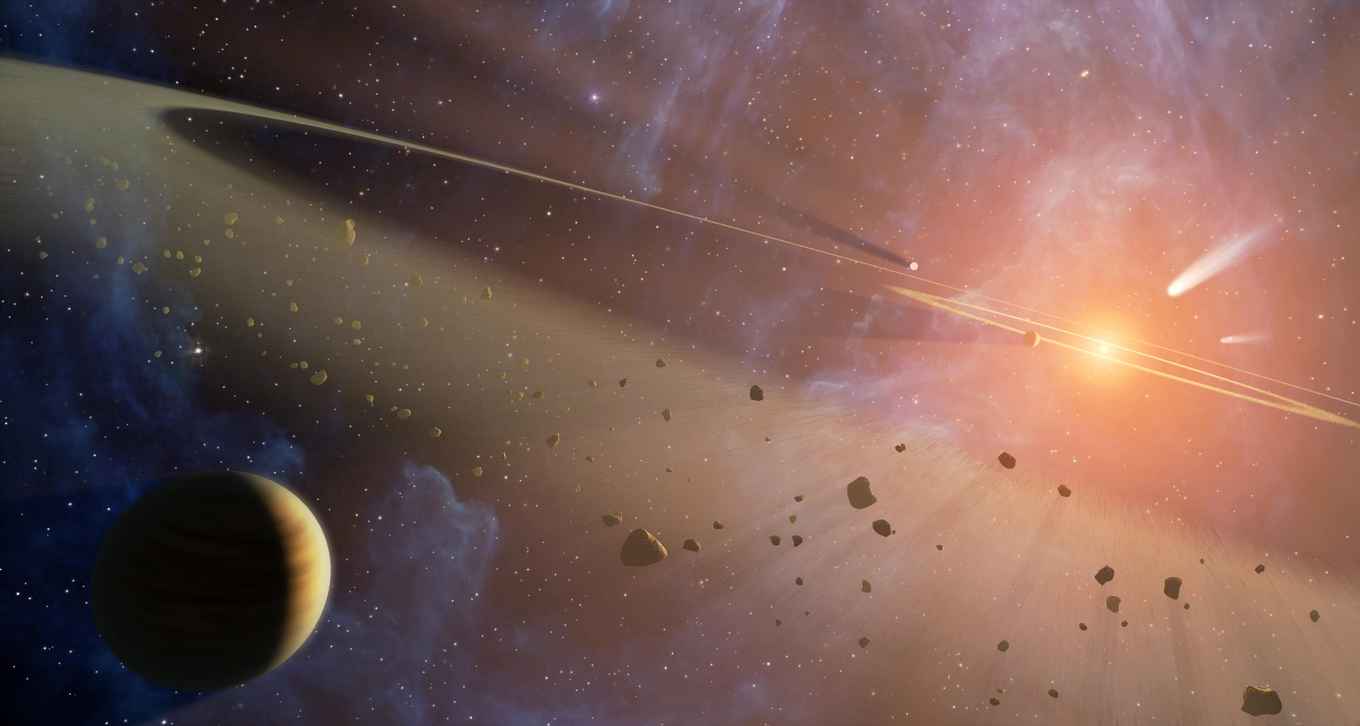Pebbles determine the direction in which planets rotate
9 August 2019

Exactly why planetoids and planets in our solar system rotate around their own axis remains a mystery. Earth, for instance, takes 24 hours to complete one full rotation around its axis. If the direction of this rotation is the same as the direction of a planet’s orbit around the sun, which is the case with Earth, then this is known as prograde rotation. If the rotation is counter to the orbital direction, it is known as retrograde rotation.
Observations have shown that planetoids and planets mostly rotate around their axis in a prograde direction and that the time needed for one full rotation around their own axis is roughly between one and 40 hours. The classic model of planetary growth provides no explanation as how this rotation comes about. In this model, proto-planets sweep up large rocks in their wake, but these come from all directions and in theory do not generate any spin.
This is why Visser and his colleagues examined whether the observations could be explained using the pebble growth model. In this model, a rock grows into a larger object such as a planetoid by sweeping up small pebbles. This growth phase takes place in an early phase of the formation of the solar system, during which gas and dust still exist separately from each other in the planet-forming disc around the star.
As pebbles of all shapes and sizes are swept up, the object quickly grows and hence gains in mass. The friction caused by the gas slows down the pebbles, which are then swept up. It has now emerged that pebbles in an orbit between the star and the planetoid remain in the vicinity of the proto-planet for a longer period, but pebbles in an orbit further out are mostly travelling too fast past the planetoid or planet to be swept up. As a result, the pebbles in the inner orbits will collide with the planetoid or planet at a certain angle and, so to speak, whip the celestial body around like a spinning top in the prograde direction.
The direction and time scale for a single complete rotation about a body’s own axis as calculated by the researchers provides an excellent fit with observations made in the solar system. Visser: ‘The result not only provides an explanation for the rotation of the planets, it is also a further confirmation that the pebble-growth model is a promising model for explaining both the growth and the properties of planets and planetoids.’